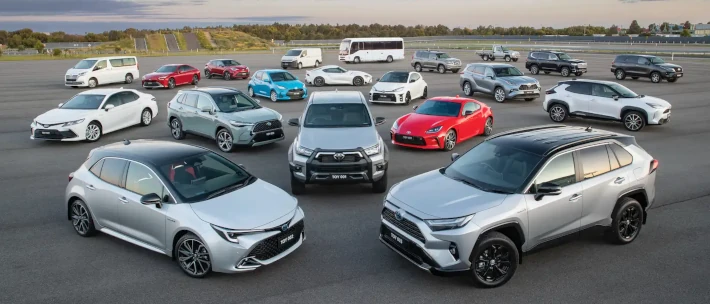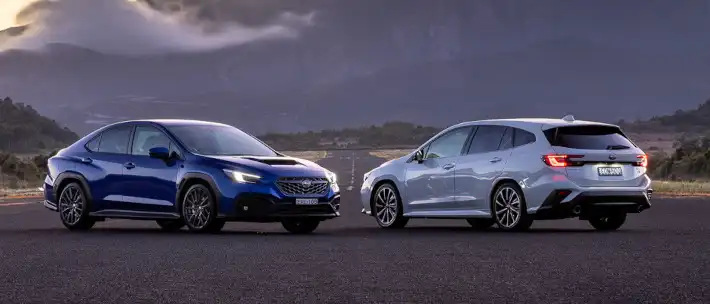Apple CarPlay and Android Auto have made their way into the majority of new cars on sale here in Australia, so let’s take a closer look at their features, benefits and potential holdbacks as we dive into a comparison of both.
Buying a new car? We can save you time and money.
Get in touch with one of our Car Buying Specialists today.
Request a quoteApple CarPlay vs Android Auto Comparison
Whether you’re using Apple CarPlay or Android Auto in your vehicle depends, of course, on whether you’re using an iOS device like an iPhone, or an Android-based smartphone.
Let’s take a closer look at how the two systems match up on key features and everyday usability.
App Integration
-
Apple CarPlay will scan apps you’ve downloaded and automatically integrate them into your vehicle’s infotainment display.
This means common apps like Apple Music, Spotify, Podcasts, both Apple and Google Maps, Waze, Messages, Phone, Calendar, Audiobooks, News+ and Youtube Music can all be integrated and used in your vehicle.
-
Android Auto will, in much the same way, look at the apps you’ve got sitting on your phone, and integrate a subset of these that are designed to work with the Android Auto system.
Having said that, Android Auto has been designed to work alongside a wider range of applications, including more third-party apps that Android users might want to use in their cars.
Connectivity
Both Apple CarPlay and Android Auto can be connected to your vehicle’s infotainment system display via a USB connection, while a growing number of vehicles offer wireless connectivity that connects to your smartphone.
Wireless connectivity asks you to make an initial connection via Bluetooth, which is then strengthened by a combination of WiFi and cellular data. This allows you to keep your phone in your pocket while driving, all while benefitting from the convenience of a wireless connection.
Looking for a car with the best infotainment system? Get in touch with OnlineAuto and we’ll help narrow down your best tech options.
Voice Assistance
-
Apple CarPlay’s voice assistance system will be familiar to any iOS user, with Siri’s voice recognition system responding to requests, replying to text messages and even inputting directions.
-
In much the same way, Android Auto leans on the Google Assistant, which is able to make a call, send a new text message to a contact, reply to a new message or change the music that you’re listening to.
Navigation
Both Android Auto and Apple CarPlay are functional with a range of navigation applications, including the stock Apple Maps and Google Maps you’ll have installed on your phone right out of the box.
Better yet, both allow you to download third-party navigation apps like Waze, TomTom Go and Sygic if you’re more comfortable with those apps over Apple or Google maps.
Calls and Notifications
-
Apple CarPlay displays call and message notification details on the home page of your infotainment system, and asks if you’d like to answer the call or access the message, which is actually read out loud by Siri in order to reduce distractions.
After a message is read out loud, Siri will ask if you’d like to respond to that message vocally, which the system will convert to text and send on your behalf.
-
Android Auto on the other hand, displays a new call or message notification on a small portion of the screen, allowing you to maintain your attention on any current navigation information that might be important.
The process of answering calls and replying to messages verbally via the voice recognition system is much the same.
User Interface
-
Apple CarPlay has been designed with Apple’s concerns for simplicity and aesthetics clearly in mind, with a simple layout that is both visually appealing and basic enough for new users to gain confidence while navigating menus.
-
In much the same way, Android Auto keeps things simple with a very simplistic main menu and a driving display that prioritises navigation information foremost, while also displaying some entertainment information.
Taking Screenshots
Both Android Auto and Apple CarPlay allow you to take a screenshot, so long as you’re not actively driving the vehicle at that time.
-
To take a screenshot with Apple CarPlay, stop driving and simply press your lock and volume up buttons at the same time.
-
To take a screenshot while using Android Auto, click settings, and then make your way to Android Auto’s advanced features and then to the ‘about’ button. Now, press the three dot menu and select developer settings, which will present you with the option of sharing a screenshot.
Messaging
-
Messaging with Apple CarPlay is a simple process that is taken care of by Siri. To get started, simply hold your voice command button or say ‘Hey, Siri… send a message to [name].”
Siri will then respond by saying “what would you like the message to say,” to which you simply say your message out loud, which will be relayed before asking if you’d like to send.
-
In the case of Android Auto, the process is pretty much identical. Simply prompt the “Hey Google” system into action and tell the assistant to whom you’d like to send a message to.
Music & Audio
-
Apple CarPlay allows you to access music and audio files from a wide range of applications, including Apple Music, Spotify, Youtube Music, Audible, Amazon Music and more.
-
Android Auto offers the same access to popular music and audio applications, as well as a number of third-party apps that you won’t find with Apple CarPlay integration.
The process of accessing your music or audio files using Apple CarPlay and Android Auto is a simple process. Simply navigate to the application that you’d like to use using either the touch screen or voice recognition, and if your phone has enough reception, music will begin playing automatically.
Wrapping Up
The simple fact is that while Apple CarPlay and Android Auto come from two different companies using two different ecosystems, they’re closely linked when it comes to the overall user experience.
This means that there is no noticeable performance or useability gap between the two.
Both are simple to use and mimic the user experience of a smartphone, so users new to the world of smartphone integration won’t feel overwhelmed while using each system.
What can have a major impact on the user experience, though, is the quality of the vehicle’s infotainment system, which OnlineAuto can help recommend while you’re in the car-buying process.
What is the Advantage of Apple CarPlay & Android Auto?
The major advantage of using Apple CarPlay and Android Auto while driving is that the simple design and added voice controls allow you to keep your attention on the road, with minimal distractions.
Another advantage is that you use the same, simple user interface, regardless of the car you’re driving. This can be handy, particularly in cars that have overly complicated infotainment systems and helps you to input your destination and music choices via voice recognition, rather than working through countless menus.
What is the Difference Between Apple CarPlay & Android Auto?
The difference between the two is simple, with Apple CarPlay designed solely for the iOS operating system that iPhones use, while Android Auto is designed for a wider range of smartphones running the Android operating system.
Is Android Auto Better than CarPlay?
If we’re honest, the difference between the two is negligible, with both Apple CarPlay and Android Auto offering the same major features of making and receiving calls and text messages, controlling your in-car navigation and your entertainment options.
Request a Quote
If our explainer of Apple CarPlay and Android Auto has sparked your interest, click here to get in contact with one of our car-buying specialists who can help find your dream car with a high-tech infotainment system.








